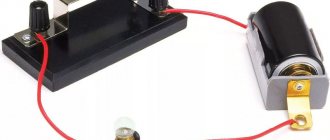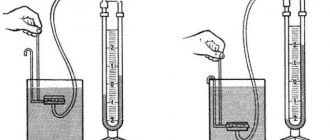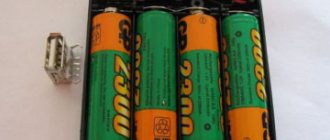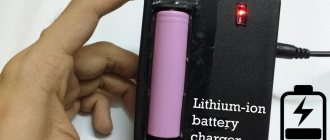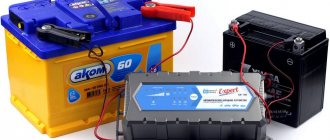Telephones became very common and solved the communication problem. Now the problem of charging smartphones and other portable devices is brewing. Chargers and devices to replenish the charge on the device’s batteries are not always available. Every year, global companies patent new ways to charge phones that do not require an outlet. Now you can charge your phone without an outlet in many ways and in any conditions. The devices are very diverse and amazing.
Powerbank
The most common portable charger is a power bank. This is an external battery that is compact and lightweight. You can charge absolutely any gadget from it if you have a suitable adapter.
External batteries come in different types, with individual characteristics. The main parameter is capacity. The larger it is, the longer it will be able to provide electricity to the phone. The number of permissible charges will depend on it. Portable phone chargers can keep your smartphone charged for days.
Pros of a portable battery
In modern society, a person without a smartphone is like without hands. It is difficult to imagine that we could have done without such electronic devices before. People managed to somehow not be late for meetings and, in general, meet! Now it is difficult to imagine how this is possible without communication via smartphone.
He has become so integrated into our lives and accompanies us everywhere. Sometimes solving some problems without it is not possible. Let's say terrain orientation. Google maps cleverly helps out with this. What about a calculator that is always at hand? Application for monitoring health, weight and so on.
People have become too spoiled by technology. When the phone dies, they feel helpless in this world. To avoid this situation, you must have a portable battery with you. Otherwise it is called Power Bank.
A great thing that will save everyone when their battery is running low. Traveling on the train will be less tiring if you have a working gadget at hand. With it you can read, listen to music, play games.
What can we say about students? Gadgets are the absolute salvation of young people. And the situation when they sit down before our eyes becomes incredibly stressful, because there is no way to properly charge it. After situations like this, many people purchase this device. It comes in handy when needed, does not require an outlet and is quite compact.
So, this product will be useful to everyone. It won't take up much space in your bag, but will bring a lot of convenience.
Solar battery
Battery-free calculators powered by solar energy were once popular. Portable phone chargers work on the same principle. The solar battery operates efficiently all day long.
The device can fully charge a phone in 5-10 hours under high solar activity. If the sun shines weakly, it will take longer, approximately 15-18 hours.
Solar panels can be incorporated into any item of clothing or umbrella. This will increase the usable area of the battery and make charge accumulation faster.
What can you do to keep your phone charged longer if necessary?
If you have very little charge left, try minimizing your phone's power consumption so that you have enough left over until your next opportunity to recharge:
- Turn off mobile Internet, Bluetooth, Wi-Fi. These functions consume the most energy.
- Reduce brightness to minimum.
- Close all unnecessary programs so that your device does not waste energy running them in the background.
- Take your phone out of lock mode as little as possible (in other words, don’t turn on the screen - let the phone “sleep”).
- Turn off your phone completely unless you expect an urgent call. Turn it on when you need to make an important call.
- Place your phone in the shade to keep it cool. A heated battery discharges much faster.
Classic ways to recharge your phone if there is no access to electricity: a charged laptop, an external battery (wired or wireless), an adapter for the cigarette lighter in the car. There are more original and practical devices for camping: electric saucepans, special potbelly stoves, solar panels, etc. It is highly not recommended to heat or beat the battery too much to get a couple of percent - you will simply ruin it. What methods do you know?
- Author: Ekaterina Vasilyeva
Rate this article:
- 5
- 4
- 3
- 2
- 1
(12 votes, average: 3.5 out of 5)
Share with your friends!
Manual dynamo charging
An interesting solution for charging a smartphone is a dynamo machine, which is convenient to carry with you. It converts the physical force applied while turning the handle into energy.
To send an SMS or have a brief conversation with your interlocutor, you will need to continuously spin the machine for about a minute. To fully charge the phone, you will need to turn the handle for more than one hour.
On a note! There are special dynamos that are mounted on a bicycle wheel. Thus, when driving 10-12 kilometers, you can quickly charge your phone battery.
Is the heat of the charger dangerous?
It is normal for the charger to heat up during operation. It's another matter if it overheats very much. This may mean that either the “charging” or the electrical wiring has some defects. It is best to check the wiring and replace the “charging” with a new one. Otherwise, a short circuit or even a fire may occur, and the phone may be seriously damaged or broken. In addition, this problem may result in a defective socket (contact falling out).
Recommendations:
- Use the original, “native charger” for your phone. People often choose cheap Chinese charging modules, although they can break down quickly. It’s better to buy an expensive, but high-quality charger once and not worry.
- Do not use the phone for too long while charging. It is better to let the device charge to the end.
- Check the battery with special applications from the Play Market or Apple Store.
Remember that a bad charger can ruin even the most powerful battery.
“The Last Cartridge” - a case for a AA battery
You don’t always have a charger with an outlet at hand. But batteries can be purchased on almost every corner. They can be used as a power source for your phone.
This portable charge is called the last cartridge. It is a case into which a AA battery or a whole block of them is inserted. Using a regular charging cable, the device connects to the phone and begins to power it. One battery is enough to replenish a few percent. It's better to use the whole unit to charge your phone.
Charge a smartphone without an outlet: what should a normal power bank be like?
Powerbank has become as integral an element of modernity as a good camera in a mobile phone or a laptop that can run on battery power all day. The only problem is that you have to charge them quite often, and it’s not always possible to wait half an hour sitting at the outlet. Fortunately, there are many different portable batteries on the market. All that remains is to understand how to choose a normal one so that it works for a long time, charges quickly, and does not weigh like a cast-iron bridge...
Photo: Anker
What does a power bank consist of?
In general, the device for such charging is quite primitive.
Regardless of the shape and size, one or more battery banks, a controller that provides charge/discharge, a pulse transformer and a bunch of connectors for connecting a load (smartphone, camera or laptop) are hidden inside. The devil, as always, is in the details. All batteries are approximately the same - either soft open-frame lithium batteries or standard 18650 cells. This has almost no effect on the operation of the device itself - the capacity-to-size ratio is approximately the same everywhere, and you should not expect miracles here. If breakthrough technologies were available to someone, believe me, the next day they would be stuffed into mobile phones, not into power banks. The issue of the quality of the “cans” themselves inside the portable charger remains on the conscience of the manufacturer, so the Chinese noname may not produce the promised currents or volumes for obvious reasons.
The classic scheme of a Chinese power bank: a battery of minimal capacity, the cheapest board, two bags of sand for weight. Photo: Says.com
The main difference between “good” and “not so good” power banks is the electronics unit, which ensures both the charging of the internal batteries themselves and the operation of the device with various equipment that you will power with it. It can be either as primitive as possible (that is, it will only convert voltage and monitor the state of the built-in battery), or a technically complex device that regulates dozens of parameters. A good portable charger not only ensures the conversion of 3.7 volts into 5 or 12, but also monitors the temperature inside the case, controls the uniform wear of the cells and their individual parameters, and most importantly, solves the problem with fast charging protocols.
Well, now with the arrival of USB Type-C the mess will definitely end.
Or not... Photo: xkcd.ru
A million “fast charging” options are no different from the bunch of different connectors in mobile phones of the decade before last. This is due to the market economy and the reluctance of some companies to pay patent royalties. It’s more profitable to come up with something of your own and also make money on unique accessories than to adapt to someone else, spend money on changing production chains, break compatibility with existing products... In general, there are a lot of reasons, but the result is the same - not all devices charge the same way quickly if a non-factory power supply is used. At least that's how it used to be.
What are the different fast charging protocols?
To ensure that a nearly thousand-dollar gadget that runs out of juice by lunchtime doesn’t upset its owner too much, engineers have taught smartphones and laptops how to quickly charge.
Some ten years ago, putting a mobile phone on charge overnight was the norm - batteries with one and a half or two thousand milliamp-hours slowly gained percentages from standard units of 5 volts 0.5 amperes. Today, charging from 0 to 100 percent in more than 2 hours is considered bad manners - and, willy-nilly, power banks have to comply. The problem is that there are a lot of protocols for this fastest charging: it all started with Qualcomm Quick Charge - chips from this giant are installed in most mobile phones, but Samsung has its own processors - and its own fast charging protocol, partially compatible with QC 2.0.
And then there is Huawei with Kirin (and its proprietary developments), MTK devices with Pump Express, and a whole collection of gadgets from the BBK conglomerate that require a special chip cable for fast charging and use a non-standard Super VOOC protocol. There is even a special genre of video - the race of accelerated charging protocols.
The icing on the cake is the USB Power Delivery standard, adopted as the basis for Apple's fast charging. In short, previously only one basic power profile was allowed via USB - 5 Volts and 0.5 (USB 2.0) or 0.9 (USB 3.0) Amperes. Then they developed an extension to the USB Power Delivery standard, which took into account the requirements of modern power gadgets and made it possible to change these profiles.
USB Power Delivery changes two key parameters. Firstly, gadgets can agree among themselves who will be the source and who will be the consumer (this is how reverse charging appeared - you can charge headphones or another phone with your phone). Secondly, when both devices support this protocol, they can go beyond 5 Volts and 0.9 Amps. The consumer can request high currents and voltages from the source - up to 20 Volts at 5 Amps (100 W) - and the source, depending on its capabilities, can provide such power.
And how, one wonders, with all this zoo to make a human portable battery?
How to create a truly universal gadget?
Standard batteries produce from 3.7 to 4.3 volts - and gadgets are charged with voltage from 5 to 12 volts, depending on the charging protocol and the current stage (some “smart” chargers change the voltage and current depending on the charge level of the consumer’s battery).
There are no questions about converting one voltage to another - but how to ensure fast charging with such a zoo of standards? Anker's custom PowerIQ 3.0 protocol chipset for portable chargers helps. When you connect the battery to your native charger, it recognizes and copies the “fast charging” communication protocol into the internal memory. And when you connect your smartphone or laptop to the power bank, PowerIQ selects the correct fast charging standard based on requests from the gadget and provides the same performance as charging from a 220-volt network.
Anker PowerCore. Photo: Anker
Anker knows how to make high-quality chargers; with such experience behind them, making a good powerbank is not difficult. We take reliable batteries from trusted suppliers - 20 or 10 thousand mAh, and equip them with additional thermal sensors. This way you can be sure that the “banks” do not overheat during charging or operation (and therefore degrade less) and reduce the load to extend the life of the device. We equip the power circuits with protection against high currents and voltages, as well as a hardware switch to reduce self-discharge currents. And then the fun begins.
Photo: Anker
In addition, the chipset monitors the condition of your cable and conductor resistance losses, making appropriate adjustments to the charging algorithm - thus ensuring the highest possible speed of replenishing your device's battery. Not to mention such banal things as protection against short circuits, overheating, high currents, etc. - most conventional power banks provide only basic control of parameters during their own charging - and then only for the purpose of protecting the built-in batteries from spontaneous combustion.
Results
What distinguishes a good powerbank from an ordinary one?
For the average user - almost nothing. In an emergency, both will save you, but with regular use, everything changes. With a power bank from Anker, you don’t have to walk around with a “brick” of battery and a bunch of wires in your pocket, risking them getting caught on any protruding object and thereby sending your brand new iPhone flying. The charging speed, which is not inferior to the supplied 220-volt charger, allows you to replenish up to 50% of your smartphone’s battery charge in 20–30 minutes and continue to use it wirelessly. And full support for USB Power Delivery makes it possible to charge not only a phone or tablet, but also a laptop. The main thing is to have the appropriate double-sided Type-C at hand.
Breathing mask AIR
The small mask incorporates the operating principle of a wind turbine. The generator rotates as you inhale and exhale. To charge your phone, you just need to put on a mask and lie down to rest or exercise.
During active activities, the phone can be recharged by 10-15 percent in 40 minutes. This charging device is economical, and when using it at night, you can completely abandon standard charging from a wall outlet.
Power Bank Case
This is the name of a case that charges the phone constantly - just put it on the device and connect it through the charging port. The additional protective housing contains a power cell that can maintain the charge of the mobile device when required (for example, at the press of a button). The charging case will be an ideal option for those who want to preserve the appearance of the gadget and extend its battery life without increasing its size.





